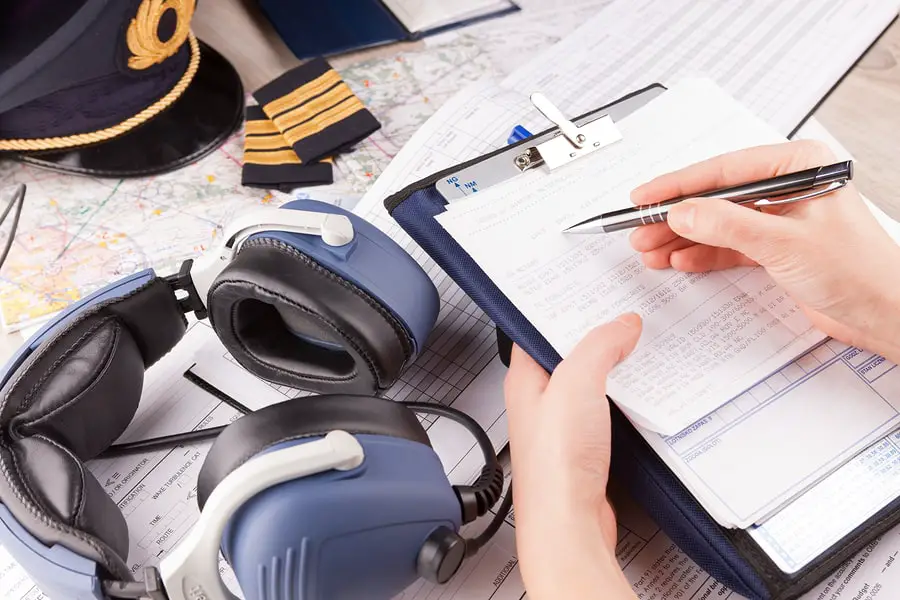Table of Contents
*This post may contain affiliate links. As an Amazon Associate we earn from qualifying purchases.
Pilots are one of the most crucial employees in the travel industry.
Flight continues to be a popular method for getting from point A to point B.
People from all walks of life prefer to do their travel in the air, and this makes good pilots a necessity.
Pilots have a large amount of responsibility. Their jobs require them to be focused and attentive, as they influence the safety of all their passengers, every member of the flight crew, and even those on the ground below.
But while a person may feel they have the intellectual prowess and focusing ability to fly a plane, it can be confusing knowing how to get started with the licensing process.
Many people wonder how to get a pilot license so they can begin a career in the aviation industry. When it comes to the topic of how to get your pilot’s license, there are a few different steps to take.
Going through the process properly is key for gaining the necessary skills to find reliable employment and complete the duties of pilot in an efficient, responsible, and reliable manner.
Starting Out as an Aspiring Pilot
Those who desire to work as pilots have a big task in front of them.
Going from an amateur to a professional capable of flying through the air without trouble can seem like a daunting and complex task.
Part of getting a pilot’s license is knowing the right place to start.
The journey usually begins with a private pilot certification. This requires the trainee to learn in a single-engine plane and this is often done alongside a professional pilot who has proven experience flying long distances with ease.
The training involves learning the basics of the plane’s mechanical components, how to use the controls, how to react to unexpected developments in the sky, and all the other fundamentals pilots must master in their line of work.
This entry-level training helps aspiring pilots gain the skills they need to move forward with their training.
The next step is to gain the additional training which helps the trainee understand how to handle different types of planes as well as how to fly in various types of weather conditions that could impact their trip.
Gaining Ratings and a Commercial Pilot Certificate
The next step for a training pilot after they’ve acquired their private pilot’s license is to gain the ratings they need.
The first of these is the multi-engine ratings. Most large planes made to carry large amounts of passengers have multiple engines, making this additional training vital for anyone who hopes to find steady work as a pilot.
The next rating is the instrument rating, which helps pilots understand how to work with different mechanical setups in their planes and fly under various types of weather conditions. These ratings are important for helping pilots round-out their training and gain the detailed experience they need for safe flight.
There is another certification beyond this one – the certified flight instructor certificate. This allows a person to fly planes for a living, provided they have the proper experience necessary in the role.
Why Experience is Vital for Pilots
When it comes to learning how to become a pilot, most people concentrate only on the licensing and certification processes.
But getting a private pilots license and the appropriate additional training are only one part of the process.
Experience is a necessity for any pilot who hopes to have a long and successful career.
Getting that first job requires a person to have thousands of hours of experience to their name. This ensures they’ve proven themselves in real-world situations and helps employers feel confident in the pilot’s abilities.
Experience usually functions as the best teacher, as pilots who are working will learn to adapt to numerous conditions and obstacles on the job. Whether it’s limited visibility, harsh weather, or even minor mechanical problems, pilots who are experienced can react in the right way.
Where Do Pilots Start Their Training?
There are many different flight schools, all of which have similar but distinct programs for helping aspiring pilots get their start.
While some schools function independently, others are owned by airports and used to help them fill out their roster with qualified pilots.
Most schools advertise their rates, the length of their training programs, and the credentials of their instructors on their websites. This makes it easy for aspiring trainees to pick a school that best suits their needs.
Getting a pilot’s license requires a person to find the right establishment and stick to the training program until the end. Doing this can help anyone master flight and open themselves up to many career opportunities.

